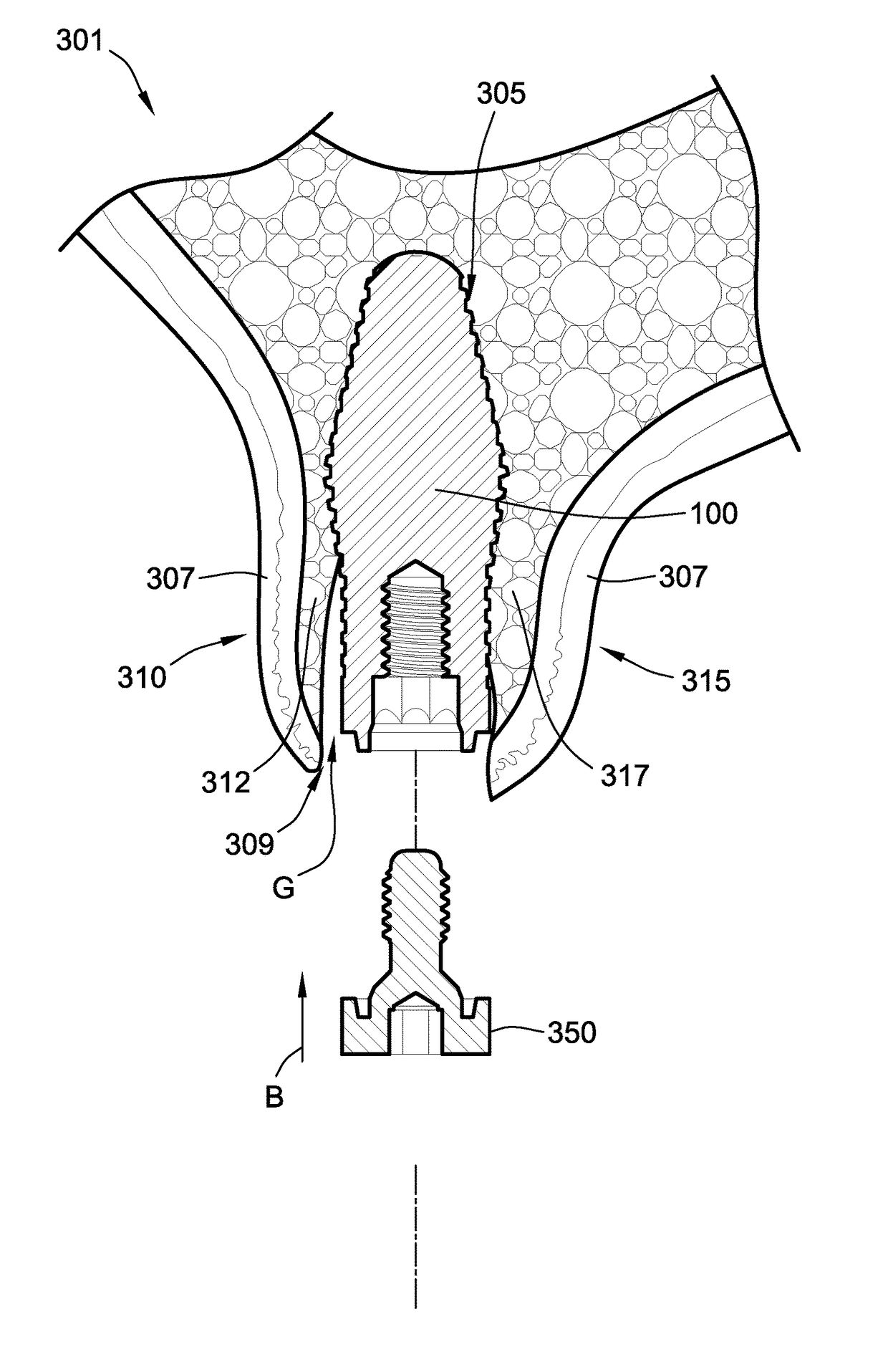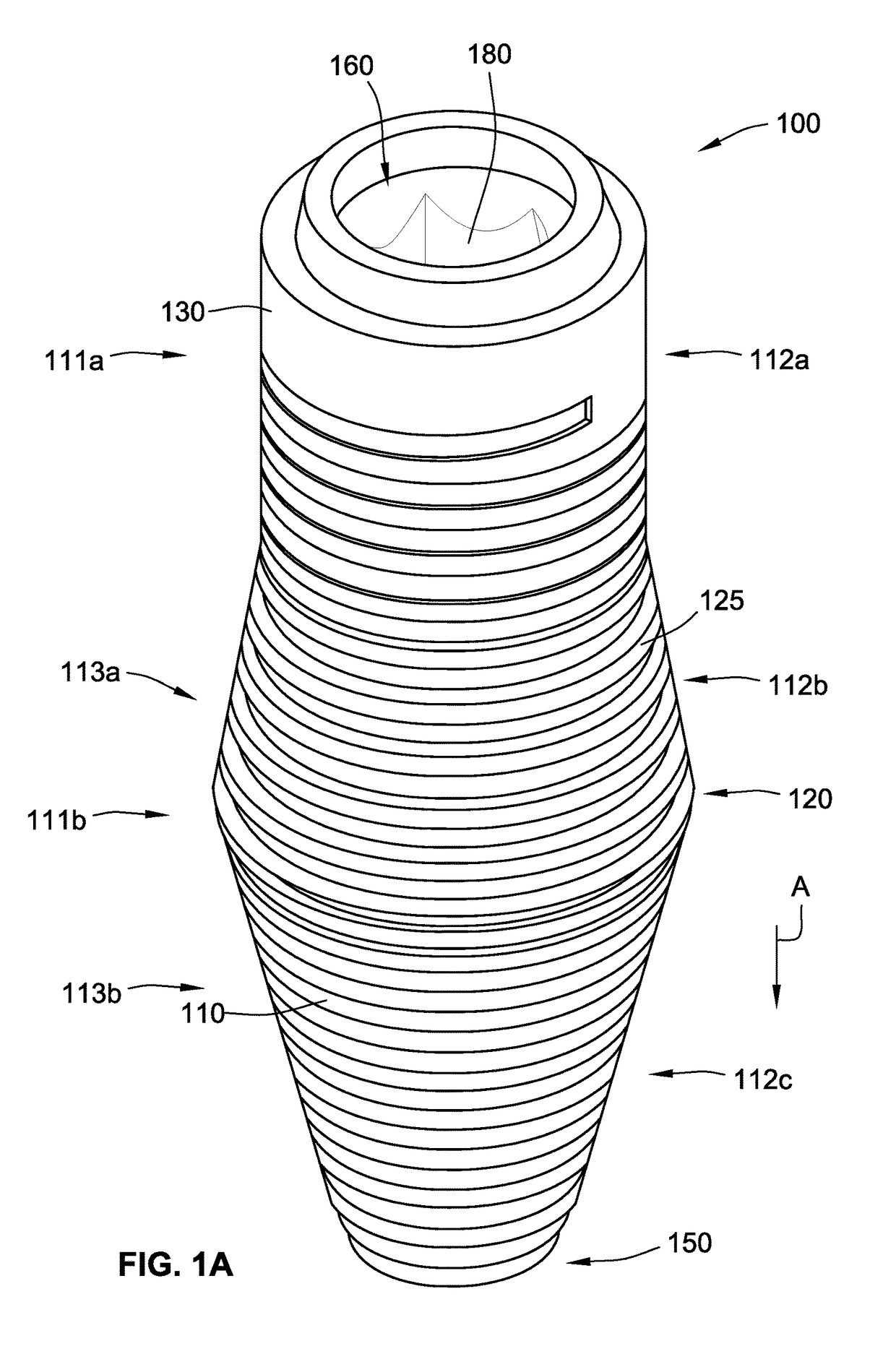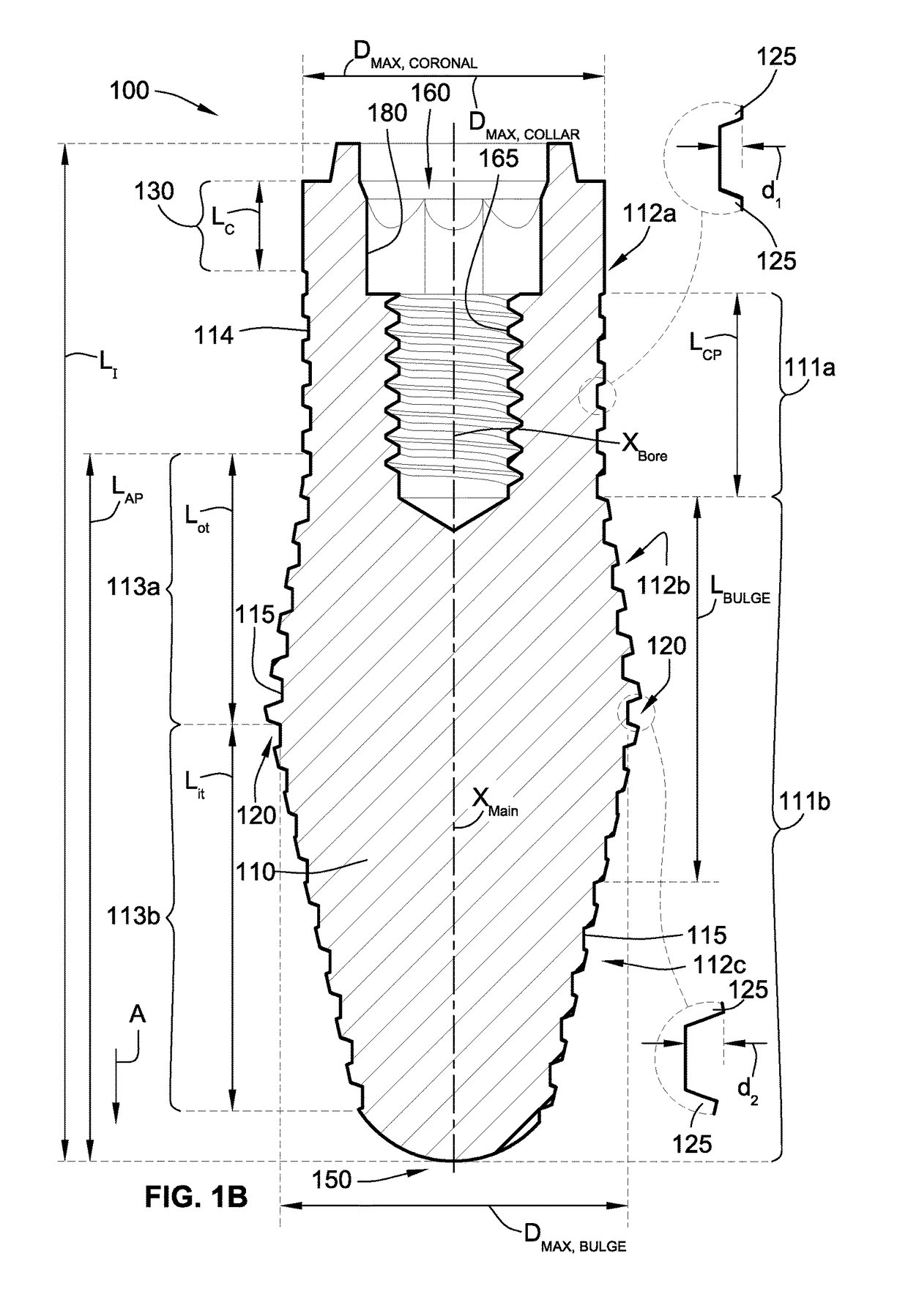Dental implant having reverse-tapered main body for anterior post-extraction sockets
- Summary
- Abstract
- Description
- Claims
- Application Information
AI Technical Summary
Benefits of technology
Problems solved by technology
Method used
Image
Examples
Embodiment Construction
[0038]Referring generally to FIGS. 1A-1B, a dental implant 100 is shown for installation into a socket in a mouth of a patient (e.g., extraction socket 309 in FIG. 3A). The dental implant 100 includes a body 110, an interior bore 160, and a non-rotational feature 180. The body 110 has a coronal portion 111a and an apical portion 111b.
[0039]The body 110 of the dental implant 100 has a main-central axis Xmain. The main-central axis Xmain is defined as a straight axis / line that goes through the geometric center and / or the axis of symmetry of at least the apical portion 111b of the body 110 of the dental implant 100. As shown in FIGS. 1A and 1B, the main-central axis Xmain of the dental implant 100 also goes through the geometric center and / or the axis of symmetry of the coronal portion 111a of the body 110 of the dental implant 100. This is because the dental implant 100 is a straight-bore dental implant as opposed to an angled-bore dental implants described herein in reference to FIG...
PUM
 Login to View More
Login to View More Abstract
Description
Claims
Application Information
 Login to View More
Login to View More - R&D
- Intellectual Property
- Life Sciences
- Materials
- Tech Scout
- Unparalleled Data Quality
- Higher Quality Content
- 60% Fewer Hallucinations
Browse by: Latest US Patents, China's latest patents, Technical Efficacy Thesaurus, Application Domain, Technology Topic, Popular Technical Reports.
© 2025 PatSnap. All rights reserved.Legal|Privacy policy|Modern Slavery Act Transparency Statement|Sitemap|About US| Contact US: help@patsnap.com



